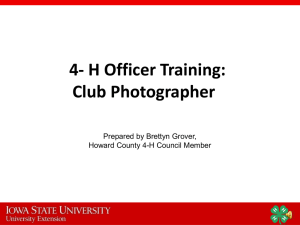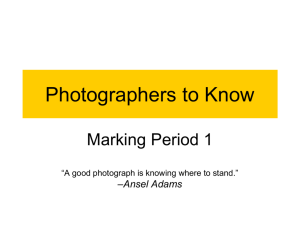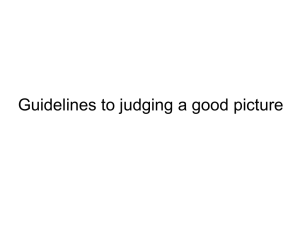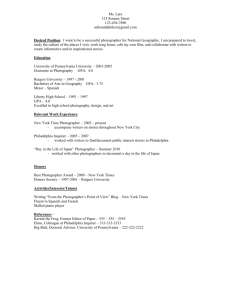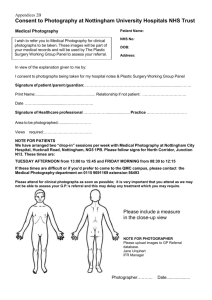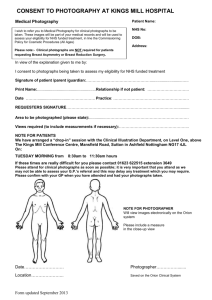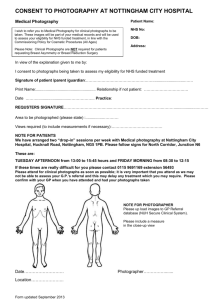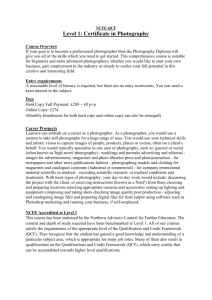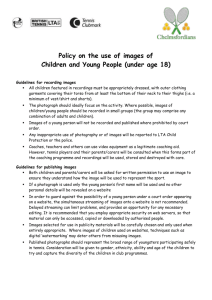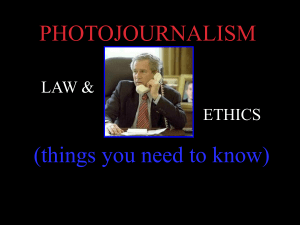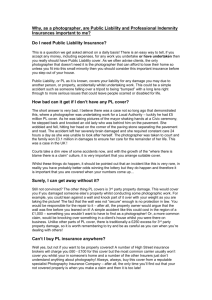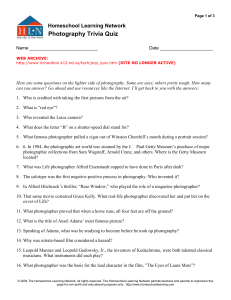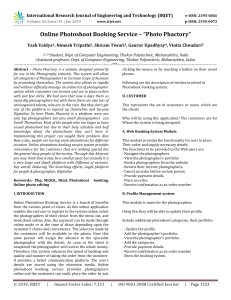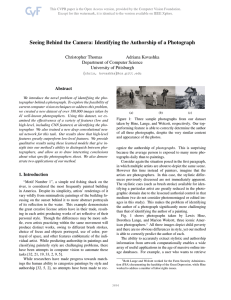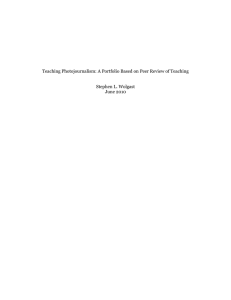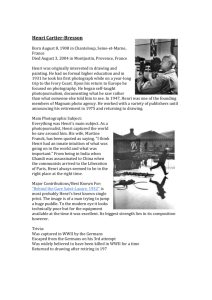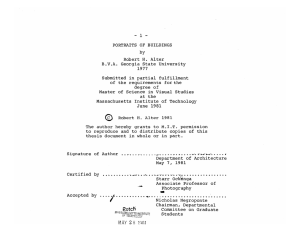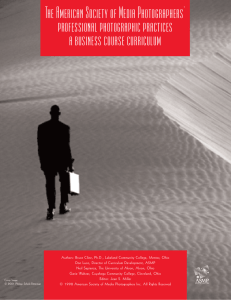NGOs taking the initiative to develop photography
advertisement
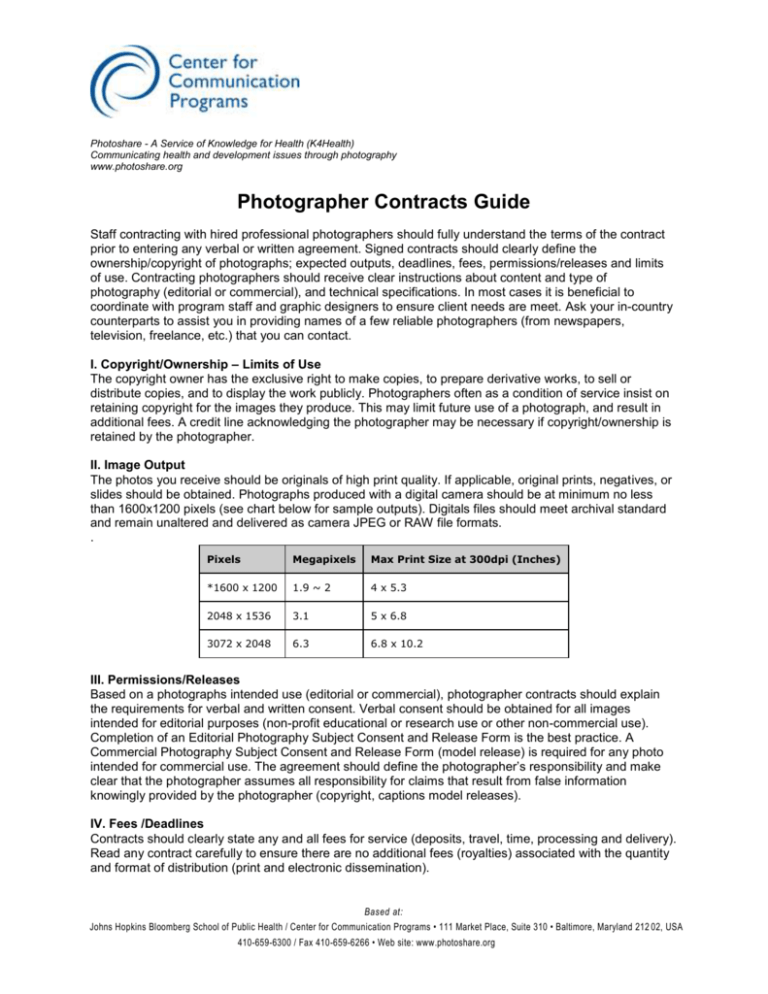
Photoshare - A Service of Knowledge for Health (K4Health) Communicating health and development issues through photography www.photoshare.org Photographer Contracts Guide Staff contracting with hired professional photographers should fully understand the terms of the contract prior to entering any verbal or written agreement. Signed contracts should clearly define the ownership/copyright of photographs; expected outputs, deadlines, fees, permissions/releases and limits of use. Contracting photographers should receive clear instructions about content and type of photography (editorial or commercial), and technical specifications. In most cases it is beneficial to coordinate with program staff and graphic designers to ensure client needs are meet. Ask your in-country counterparts to assist you in providing names of a few reliable photographers (from newspapers, television, freelance, etc.) that you can contact. I. Copyright/Ownership – Limits of Use The copyright owner has the exclusive right to make copies, to prepare derivative works, to sell or distribute copies, and to display the work publicly. Photographers often as a condition of service insist on retaining copyright for the images they produce. This may limit future use of a photograph, and result in additional fees. A credit line acknowledging the photographer may be necessary if copyright/ownership is retained by the photographer. II. Image Output The photos you receive should be originals of high print quality. If applicable, original prints, negatives, or slides should be obtained. Photographs produced with a digital camera should be at minimum no less than 1600x1200 pixels (see chart below for sample outputs). Digitals files should meet archival standard and remain unaltered and delivered as camera JPEG or RAW file formats. . Pixels Megapixels Max Print Size at 300dpi (Inches) *1600 x 1200 1.9 ~ 2 4 x 5.3 2048 x 1536 3.1 5 x 6.8 3072 x 2048 6.3 6.8 x 10.2 III. Permissions/Releases Based on a photographs intended use (editorial or commercial), photographer contracts should explain the requirements for verbal and written consent. Verbal consent should be obtained for all images intended for editorial purposes (non-profit educational or research use or other non-commercial use). Completion of an Editorial Photography Subject Consent and Release Form is the best practice. A Commercial Photography Subject Consent and Release Form (model release) is required for any photo intended for commercial use. The agreement should define the photographer’s responsibility and make clear that the photographer assumes all responsibility for claims that result from false information knowingly provided by the photographer (copyright, captions model releases). IV. Fees /Deadlines Contracts should clearly state any and all fees for service (deposits, travel, time, processing and delivery). Read any contract carefully to ensure there are no additional fees (royalties) associated with the quantity and format of distribution (print and electronic dissemination). Based at: Johns Hopkins Bloomberg School of Public Health / Center for Communication Programs • 111 Market Place, Suite 310 • Baltimore, Maryland 212 02, USA 410-659-6300 / Fax 410-659-6266 • Web site: www.photoshare.org
